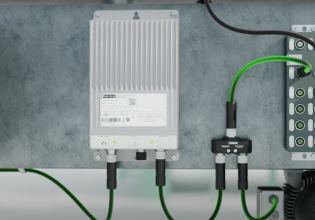Installing remote monitoring devices to GE MkIV/V/VI turbo-generators for frequency testing
The electricity generation market in Australia is changing in 2022 and suppliers are required to prove the performance of their generators to the AEMO (Australian Electricity Market Operators).
Here at site, we have to install a device in the form of a high speed data recorder which will capture key generator parameters such as AVR, excitation system voltage and current, Governor response, active and reactive power, power factor, generator terminal voltage and current, droop response and potentially more to the electricity regulator.
We are required to extract the required data from many devices including the Speedtronic (MkIV/V/VI). As we have very few Speedtronic subject matter experts (SME’s) on hand, we are getting remote support from an overseas SME.
We have been asked by the SME to supply the following:
MkV:
The SME requires the UNITn (where n is the unit number) directory complete with all the subdirectories (especially the PROM) without the UNITn and the PROM directories we cannot prepare the software modifications remotely.
MkVI
The SME requires the m6b file.
MkIV
We have provided the SME the Elementary Drawings but he requires the MLI A010 (Control System Specification) drawings also needed for each case.
Can my fellow engineers at Control.com assist in helping me how to extract the information the SME requires and the format we can provide him as we have limited experience on-site? This is appears difficult in equipment way before HDD & USB!!
Note: I am looking at basic MkIV/V/VI training for technicians and engineers at site but organising this and thereafter gaining experience in these legacy controllers for younger engineers shall take time. General assistance in these old Speedtronics is a challenge.
Many thanks for the continued support. KWS (Perth, Western Australia)
The electricity generation market in Australia is changing in 2022 and suppliers are required to prove the performance of their generators to the AEMO (Australian Electricity Market Operators).
Here at site, we have to install a device in the form of a high speed data recorder which will capture key generator parameters such as AVR, excitation system voltage and current, Governor response, active and reactive power, power factor, generator terminal voltage and current, droop response and potentially more to the electricity regulator.
- We have selected the DigSilent Grid Code Monitoring device PFM300-32 for the remote monitoring trial.
We are required to extract the required data from many devices including the Speedtronic (MkIV/V/VI). As we have very few Speedtronic subject matter experts (SME’s) on hand, we are getting remote support from an overseas SME.
We have been asked by the SME to supply the following:
MkV:
The SME requires the UNITn (where n is the unit number) directory complete with all the subdirectories (especially the PROM) without the UNITn and the PROM directories we cannot prepare the software modifications remotely.
MkVI
The SME requires the m6b file.
MkIV
We have provided the SME the Elementary Drawings but he requires the MLI A010 (Control System Specification) drawings also needed for each case.
Can my fellow engineers at Control.com assist in helping me how to extract the information the SME requires and the format we can provide him as we have limited experience on-site? This is appears difficult in equipment way before HDD & USB!!
Note: I am looking at basic MkIV/V/VI training for technicians and engineers at site but organising this and thereafter gaining experience in these legacy controllers for younger engineers shall take time. General assistance in these old Speedtronics is a challenge.
Many thanks for the continued support. KWS (Perth, Western Australia)






